Langlaufen is een leuke manier om van de winter te genieten terwijl je een geweldige workout krijgt. Het is makkelijker om te beginnen dan je misschien denkt, vooral met uitrusting zoals Snowfeet* NORDIC Skis. Deze compacte 35-inch ski's werken met gewone winterschoenen, je hoeft niet te waxen, en ze zijn licht genoeg om in een rugzak te dragen. Ze zijn perfect voor beginners en ervaren skiërs, en bieden betere controle op paden, of die nu geprepareerd, onbewerkt of zelfs in je eigen achtertuin zijn. Bovendien kosten ze minder dan de meeste traditionele sets, vanaf slechts $275.
Belangrijkste hoogtepunten:
- Verbrand Calorieën: Een skiër van 77 kilo kan 800–1.100 calorieën per uur verbranden.
- Seizoen: Langlaufen loopt van november tot april in de VS.
- Snowfeet* NORDIC Ski's: Compact, gemakkelijk te gebruiken en veelzijdig voor verschillende terreinen.
- Uitrusting Vereenvoudigd: Geen speciale schoenen of wax nodig - gewoon aantrekken en gaan.
Als je je ski-avonturen wilt vereenvoudigen of deze winter iets nieuws wilt proberen, is Snowfeet* misschien wel de makkelijkste manier om de loipes op te gaan. Laten we ontdekken hoe ze werken en waarom ze je kijk op langlaufen kunnen veranderen.
Cross-Country Skate Skiing voor Beginners: Alles wat je moet weten om te beginnen || REI
Langlaufloipes in de VS
De VS herbergt een ongelooflijke verscheidenheid aan langlaufloipes, van de dichte bossen van Vermont tot de ongetemde wildernis van Alaska. Of je nu glijdt over goed onderhouden resortpaden of ruige backcountry-routes aanpakt, er is geen gebrek aan opties. Je vindt loipes in nationale parken, staatsbossen en zelfs stadsparken wanneer de winter het landschap met sneeuw bedekt.
De meeste skigebieden in het land zijn geopend van december tot maart, hoewel noordelijke regio's vaak langere seizoenen genieten. Enkele topbestemmingen zijn Yellowstone National Park in Wyoming en het White Mountain National Forest in New Hampshire. Laten we nu de verschillende loipetypes bekijken en hoe Snowfeet* NORDIC ski's je ervaring kunnen verbeteren.
Loipetypes: Geprepareerd, Ongeprepareerd, Klassiek en Skate
De juiste loipetype kiezen kan je avontuur maken of breken. Hier is een korte samenvatting van de belangrijkste opties:
- Geprepareerde Loipes: Deze machinaal onderhouden loipes hebben een harde sneeuwlaag, waardoor ze perfect zijn voor beginners. Met hun compacte formaat en wendbaarheid maken Snowfeet* ski's het navigeren op deze loipes een fluitje van een cent. Je vindt er meestal twee parallelle sporen voor klassiek langlaufen naast een vlak, breed gebied voor skate langlaufen.
- Classic-paden: Herkenbaar aan hun parallelle groeven, leiden deze paden je ski's vooruit. In tegenstelling tot traditionele ski's die waxen en lange voorbereiding vereisen, bieden Snowfeet* NORDIC ski's (90 cm/35 inch) uitstekende controle zonder gedoe met wax.
- Skate Skiing-paden: Ontworpen voor een schaatsbeweging vergelijkbaar met schaatsen op ijs, zijn deze paden breder en vlakker. Traditionele skate ski's vereisen vaak dure, gespecialiseerde schoenen, maar Snowfeet* NORDIC ski's laten je je gewone winterlaarzen gebruiken, wat het eenvoudig en budgetvriendelijk houdt.
- Onverzorgde of Backcountry-paden: Backcountry-paden kunnen smal, dicht begroeid of ongelijk zijn - uitdagend voor traditionele lange ski's. Dankzij hun compacte ontwerp gaan Snowfeet* NORDIC ski's moeiteloos om met krappe ruimtes en gevarieerd terrein, waardoor ze een veelzijdige keuze zijn voor avonturen buiten de gebaande paden.
Regels voor paden en veiligheidsrichtlijnen
Om een veilige en plezierige ervaring voor iedereen te garanderen, moeten alle langlaufers de Cross-Country Responsibility Code volgen. Deze code benadrukt het belang van het herkennen van de risico's van de sport en verantwoordelijk gedrag. Op gedeelde paden respecteer je de aangegeven richtlijnen en houd je rekening met andere gebruikers - zoals wandelaars en sneeuwschoenlopers - om de staat van het pad te behouden en een soepele doorgang voor iedereen te verzekeren.
De wendbaarheid van Snowfeet* ski's maakt het makkelijker om veilig gedeelde paden te navigeren, wat een extra laag vertrouwen toevoegt aan je tocht.
De juiste uitrusting kiezen: Snowfeet* NORDIC Ski's
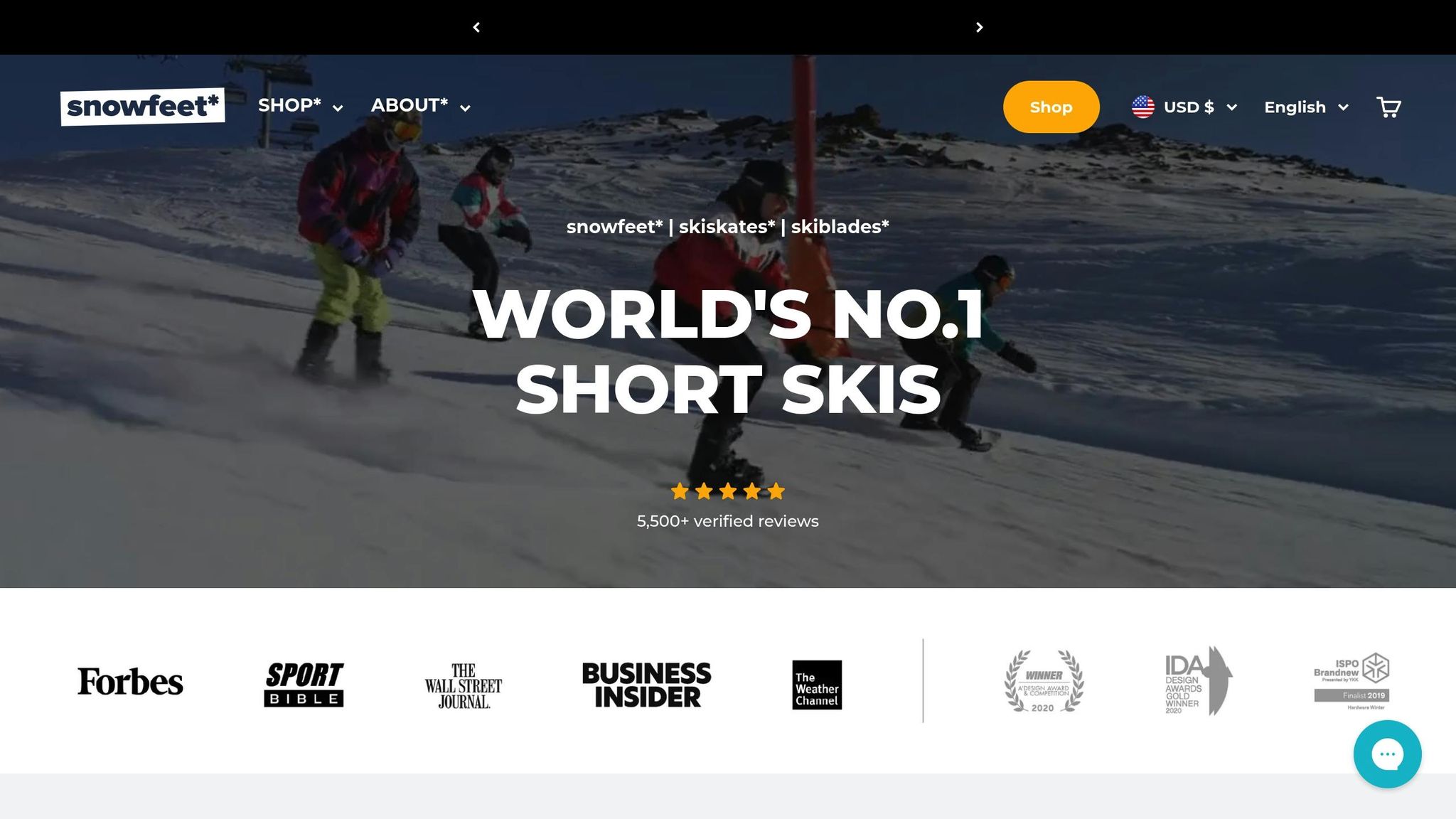
De juiste uitrusting kiezen kan je langlaufavonturen maken of breken. De juiste setup kan een zware tocht veranderen in een plezierige glijpartij door de sneeuw. Traditionele langlaufski's komen vaak met een waslijst aan vereisten - speciale schoenen, waxroutines en tijdrovende voorbereidingen. Snowfeet* NORDIC ski's doorbreken dit met hun compacte, eenvoudige ontwerp. Met slechts 35 inch lang zijn ze gebouwd om prestaties te leveren zonder al het extra gedoe.
Dit is het punt: uitrusting moet voor jou werken, niet andersom. Terwijl traditionele ski's vaak langer zijn voor meer snelheid en glijvermogen, kunnen ze lastig zijn qua wendbaarheid. Snowfeet* daagt dit idee uit door te bewijzen dat kortere ski's veel prestaties kunnen leveren, terwijl ze makkelijker te hanteren en eerlijk gezegd leuker zijn.
Kenmerken van Snowfeet* NORDIC ski's
Snowfeet* NORDIC ski's staan voor eenvoud en veelzijdigheid. Hun lengte van 90 cm maakt ze gemakkelijk te manoeuvreren, of je nu door smalle bospaadjes slingert of obstakels ontwijkt. Geen gedoe meer met lange, onhandige ski's op lastige plekken.
Een van hun opvallende voordelen? Je hoeft geen speciale schoenen te kopen. Deze ski's werken met het winter schoeisel dat je al hebt - of dat nu je vertrouwde sneeuwlaarzen, snowboardboots of zelfs skischoenen zijn. De bindingen zijn verstelbaar, zodat je een perfecte pasvorm krijgt, ongeacht wat je draagt.
Draagbaarheid is een andere grote winst. Deze ski's zijn lichtgewicht en compact genoeg om in een rugzak of de kofferbak van je auto te gooien. Dat betekent dat je spontaan de paden op kunt zonder veel voorbereiding of opslagruimte.
En laten we het hebben over onderhoud - of het gebrek daaraan. Vergeet het waxen. Traditionele ski's hebben vaak verschillende waxen nodig voor verschillende sneeuwcondities, wat aanvoelt als een wetenschappelijk experiment. Snowfeet* NORDIC ski's slaan die stap volledig over en presteren consistent op diverse sneeuwsoorten, zodat jij je kunt richten op plezier maken.
Snowfeet* versus traditionele langlaufski's en snowboards
Als je ze vergelijkt met traditionele opties, worden de verschillen vrij duidelijk. Traditionele langlaufski's zijn meestal 170 tot 210 cm lang, wat ze onhandig kan maken, vooral voor beginners of in krappe ruimtes. Natuurlijk zijn ze geweldig voor lange, soepele glijpartijen op geprepareerde paden, maar ze zijn niet bepaald gebruiksvriendelijk als het terrein lastig wordt.
Snowfeet* NORDIC ski's zijn daarentegen ontworpen voor gebruiksgemak. Er is geen steile leercurve of noodzaak om ingewikkelde technieken zoals kick-and-glide te beheersen. Ze reageren natuurlijk op je bewegingen, wat ze een geweldige keuze maakt als je nieuw bent met skiën of gewoon een intuïtievere ervaring wilt.
Een ander groot pluspunt is hun veelzijdigheid. Traditionele ski's schitteren op goed onderhouden paden, maar kunnen moeite hebben in het buitengebied of op oneffen terrein. Snowfeet* NORDIC ski's gaan moeiteloos met verschillende terreinen om, waardoor je meer paden kunt verkennen en de vrijheid krijgt om eropuit te trekken.
Hier is een snelle vergelijking:
| Kenmerk | Snowfeet* NORDIC ski's | Traditionele langlaufski's | Traditionele snowboards |
|---|---|---|---|
| Lengte | 35 inch (90 cm) | 67–83 inch (170–210 cm) | 59–65 inch (150–165 cm) |
| Compatibiliteit van laarzen | Reguliere winterlaarzen, snowboardlaarzen, skischoenen | Alleen gespecialiseerde langlaufschoenen | Alleen snowboardlaarzen |
| Waxen vereist | Nee | Ja, voor optimale prestaties | Af en toe |
| Leercurve | Geschikt voor beginners | Matig tot steil | Steil |
| Terreinflexibiliteit | Uitstekend op gevarieerde paden | Het beste op geprepareerde paden | Beperkt tot hellingen |
| Vervoer | Past in een rugzak | Vereist een dakdrager of groter voertuig | Vereist een dakdrager |
| Totale Kosten | Ongeveer $275 (alleen ski's) | Gewoonlijk $400–$800 (complete set) | Ongeveer $300–$600 (pakket) |
De kostenfactor maakt voor veel mensen de keuze duidelijk. Een volledige traditionele langlaufuitrusting - ski's, schoenen, stokken en waxbenodigdheden - kan je tussen de $400 en $800 kosten. Snowfeet* NORDIC ski's, voor ongeveer $275, laten je de extra's overslaan en gebruik maken van de uitrusting die je al hebt. Voeg daar hun draagbaarheid en gebruiksgemak aan toe, en het is duidelijk waarom ze een game-changer zijn voor langlaufen.
Je Voorbereiden op Je Langlauftrip
Een beetje planning kan je dag op de paden van stressvol naar soepel veranderen. Een groot voordeel van het gebruik van Snowfeet* NORDIC ski's is dat ze je voorbereiding vereenvoudigen vergeleken met traditionele langlaufuitrusting.
Denk vooruit over je uitrusting en kleding. Langlaufen is een serieuze workout, dus je zult waarschijnlijk zweten, zelfs bij vrieskou. Tegelijkertijd ben je urenlang buiten in winterse omstandigheden, dus warm en droog blijven is net zo belangrijk.
Benodigd Materiaal en Kleding
Je Snowfeet* NORDIC ski's zijn de ster van de show, maar je hebt waarschijnlijk al het grootste deel van de andere benodigdheden.
Begin met schoeisel. Deze ski's werken goed met verstelbare bindingen, dus je kunt stevige, waterdichte winterlaarzen gebruiken die goede enkelondersteuning bieden. Of het nu sneeuwlaarzen, wandelschoenen of zelfs oude snowboardlaarzen zijn, zorg dat ze comfortabel zijn en de uitdaging aankunnen.
Als het op kleding aankomt, is laagjes dragen je beste vriend. Begin met een vochtafvoerende basislaag - materialen zoals merinowol of synthetische stoffen zijn ideaal omdat ze zweet van je huid afvoeren. Vermijd katoen; dat houdt vocht vast en laat je koud en klam aanvoelen.
Voor je middelste laag kies je iets dat warmte vasthoudt maar je toch vrij laat bewegen, zoals een fleecejack of een lichtgewicht donsvest. Draag daarover een ademende, waterdichte jas en broek om wind en sneeuw buiten te houden. Bonuspunten als je jas okselventilatie heeft om af te koelen als het warm wordt.
Vergeet niet je handen, hoofd en voeten te beschermen. Waterdichte handschoenen of wanten zijn essentieel - wanten zijn warmer, maar handschoenen geven je meer behendigheid. Een warme muts die je oren bedekt is een must, en het is slim om een reserve mee te nemen voor het geval je eerste nat wordt. Verstelbare skistokken die reiken tussen je oksel en schouder helpen je om efficiënt te balanceren en vooruit te duwen.
Pak tot slot wat basisveiligheidsmateriaal in. Een kleine EHBO-kit, een noodfluitje en een hoofdlamp of zaklamp kunnen levensreddend zijn als je dag anders loopt dan gepland.
Met deze uitrusting ben je klaar om te genieten van de eenvoud en het gemak van Snowfeet* NORDIC ski's. Een beetje voorbereiding gaat een lange weg om je traildag tot een succes te maken.
Inpaklijst voor traildag
Slim inpakken houdt je voorbereid zonder je tas te overladen. Omdat Snowfeet* NORDIC ski's compact genoeg zijn om in een rugzak te passen, heb je extra ruimte om je essentials te organiseren.
- Hydratatie en snacks: Neem minstens 32 oz geïsoleerd water mee om bevriezing te voorkomen. Voor langere tochten kan een sportdrank helpen verloren elektrolyten aan te vullen. Pak energierijke snacks zoals trailmix, energierepen, jerky of gedroogd fruit - voedingsmiddelen die goed reizen en niet veranderen in ijsblokken.
- Navigatiemiddelen: Download trailkaarten op je telefoon, maar neem ook een papieren kaart mee als backup. Een GPS-apparaat of navigatie-app is handig, maar koud weer kan batterijen snel leegmaken. Een eenvoudige kompas is licht en betrouwbaar.
- Extra lagen: Stop reservehandschoenen, sokken en een muts in je tas. Een lichtgewicht nooddeken is een slimme toevoeging voor extra warmte indien nodig.
- Onderhoudsmateriaal: Hoewel Snowfeet* NORDIC ski's weinig onderhoud nodig hebben, is het toch verstandig om een klein multitool, kabelbinders of ducttape mee te nemen voor snelle reparaties onderweg.
Controleer voordat je vertrekt het weer en de trailomstandigheden. Heldere, besneeuwde dagen kunnen verraderlijk zijn voor je ogen en huid, dus neem een zonnebril en zonnebrandcrème mee. Als de temperatuur daalt, kunnen hand- en voetverwarmers een groot verschil maken.
Pak tenslotte alles in een waterdichte rugzak of gebruik dry bags om je uitrusting droog te houden. Natte spullen zijn niet alleen oncomfortabel - ze kunnen je avontuur vroegtijdig beëindigen. Met de juiste voorbereiding ben je klaar voor een onvergetelijke dag op de paden!
sbb-itb-17ade95
Snowfeet* NORDIC ski's gebruiken: Technieken en tips
Het onder de knie krijgen van de Snowfeet NORDIC Skis* is makkelijker dan je denkt. Dankzij hun compacte ontwerp van 35 inch zijn ze veel beter hanteerbaar voor beginners en bieden ze toch een solide ervaring voor ervaren skiërs.
Setup: Bevestigen en Balanceren met Snowfeet* NORDIC Skis
Allereerst - zorg dat je winterschoenen goed in de verstelbare bindingen passen. Deze ski's zijn compatibel met de meeste winterschoenen, dus je hoeft niet te investeren in gespecialiseerde langlaufuitrusting. Maak de bindingen strak totdat je schoenen stevig zitten maar niet te strak. Je wilt je tenen kunnen bewegen, niet verpletteren.
Door hun kortere lengte is balanceren op de Snowfeet NORDIC Skis* eenvoudiger dan met de gebruikelijke 6-7 voet ski's. Begin op vlak terrein en oefen met het verplaatsen van je gewicht van de ene ski naar de andere. Je zult merken hoe makkelijk het is om vanaf het begin te draaien en te manoeuvreren. Neem eerst kleine stapjes om het glijden te voelen.
Voor je houding houd je je knieën licht gebogen en je gewicht gecentreerd boven de ski's. Het compacte ontwerp voorkomt de frustratie van het blijven haken met de skistellen, een veelvoorkomend probleem voor beginners op langere ski's. En als je je balans verliest, stap je gewoon opzij - iets wat veel lastiger is met traditionele lange ski's.
Zodra je comfortabel bent met het bevestigen van de ski's en het behouden van je balans, is het tijd om over te gaan op meer gevorderde technieken.
Bewegingstechnieken: Skaten, Glijden en Terrein Navigatie
Om te skaten, duw je af onder een hoek van 45 graden en gebruik je je stokken om vooruit te glijden. Met deze kortere ski's voelen overgangen van kant naar kant sneller en soepeler aan, waardoor de skatebeweging minder vermoeiend is vergeleken met traditionele langlaufski's.
Een van de opvallende kenmerken van de Snowfeet NORDIC Skis* is hun stabiliteit bij lagere snelheden. Dit maakt ze perfect voor beginners die nog aan hun balans werken.
Wat betreft het klimmen bergop, zijn deze ski's een echte game-changer. Hun kortere lengte maakt het makkelijker om grip te houden, zodat je een natuurlijke loopbeweging kunt gebruiken in plaats van de meer technische visgraattechniek die nodig is voor langere ski's. Op steilere paden kun je zelfs zijwaarts omhoog stappen zonder het ongemak dat je met traditionele 6-voets ski's zou ervaren.
Voor afdalingen geeft het compacte ontwerp je betere controle. Snelle bochten en stops zijn veel makkelijker, en je ervaart niet de intimiderende snelheden die beginners kunnen afschrikken op langere ski's. Gebruik een sneeuwploegtechniek door de punten naar elkaar toe te richten, of probeer parallelle bochten - bewegingen die maanden kunnen duren om te beheersen op conventionele ski's.
Op gevarieerd terrein schitteren de Snowfeet NORDIC Skis*. In smalle, beboste gebieden zijn ze veel gemakkelijker te manoeuvreren dan lange ski's. Op geprepareerde paden passen ze netjes in de bestaande sporen, en op ongerepte sneeuw zijn ze veel eenvoudiger te beheersen.
Deze technieken laten zien hoe veelzijdig en gebruiksvriendelijk deze ski's zijn, ongeacht de loipecondities.
Veelvoorkomende Problemen Oplossen met Snowfeet* NORDIC Skis
Zelfs met een goede techniek kunnen er een paar uitdagingen opduiken. Hier lees je hoe je ze aanpakt.
Als je wegzakt in diepe sneeuw of valt, til dan één ski tegelijk op en stap op steviger terrein. Het korte ontwerp vermindert verstrikking, dus weer opstaan gaat snel en gemakkelijk - geen gedoe meer met gekruiste ski's zoals bij traditionele ski's.
Voor snelheidscontrole gebruik je kleine gewichtsverschuivingen. Deze ski's reageren super snel, dus er is geen behoefte aan overdreven bewegingen zoals je misschien bij langere ski's zou doen.
Sommige skiërs die overstappen van traditioneel langlaufen kunnen moeite hebben met de stoklengte. Bij Snowfeet NORDIC Skis* werken iets kortere stokken beter omdat de ski's een meer rechtopstaande houding aanmoedigen in plaats van de voorovergebogen positie die typisch is voor conventionele technieken.
Als je van alpineskiën of snowboarden komt, kan het even duren voordat je vertrouwen hebt om stabiel te voelen bij lagere snelheden. In tegenstelling tot traditionele langlaufski's die wiebelig kunnen aanvoelen, blijven Snowfeet NORDIC Skis* stabiel en voorspelbaar, waardoor ze een geweldige optie zijn om vertrouwen op te bouwen en de juiste techniek te leren zonder constant te vallen.
Dankzij hun compacte en vergevingsgezinde ontwerp maken deze ski's elk aspect van de loipe leuker en toegankelijker, of je nu een beginner bent of een ervaren skiër.
Waarom Snowfeet* het Beste Werkt voor Langlaufen
Snowfeet* NORDIC Skis brengen een frisse draai aan langlaufen door de uitdagingen van traditionele uitrusting aan te pakken. Hun compacte en gebruiksvriendelijke ontwerp maakt de sport toegankelijker en veelzijdiger, waardoor skiërs de kans krijgen om een breder scala aan loipes en ervaringen te genieten.
Toegang tot Meer Soorten Loipes
Traditionele langlaufski's, meestal 6 tot 7 voet lang, zijn gemaakt voor geprepareerde loipes. Hun lengte maakt scherpe bochten en navigeren door beboste gebieden of stedelijke paden lastig. Snowfeet* NORDIC Skis zijn daarentegen ongeveer 35 inch (90 cm) lang. Deze kleinere maat maakt ze ongelooflijk wendbaar, perfect voor lokale parken, smalle wandelpaden of zelfs hellingen in de achtertuin. Bovendien gaan ze beter om met zachtere, ongeprepareerde sneeuw, waardoor het frustrerende "tip-diving" probleem vermindert. Met Snowfeet* ben je niet beperkt tot specifieke loipes - je kunt een veel breder scala aan landschappen verkennen.
Betere Controle en Wendbaarheid
De kortere lengte van Snowfeet* geeft je betere controle. Bochten maken, stoppen en obstakels ontwijken voelt natuurlijker en minder intimiderend, vooral voor beginners. Op zachte hellingen helpt het ontwerp de snelheid te beheersen, waardoor de ervaring veiliger en leuker aanvoelt. Voor ervaren skiërs opent deze extra wendbaarheid mogelijkheden om scherpere bochten te maken of te experimenteren met creatieve routes. En omdat ze licht en compact zijn, zijn Snowfeet* gemakkelijk mee te nemen, wat bijdraagt aan hun gebruiksgemak.
Draagbaarheid en Toegankelijkheid
Draagbaarheid is nog een grote plus. In tegenstelling tot traditionele ski's die vaak grote tassen of dakdragers nodig hebben, zijn Snowfeet* klein genoeg om in een rugzak te gooien of met de hand te dragen. Dit maakt ze perfect voor spontane trips. Vooral gezinnen waarderen het dat Snowfeet* werken met gewone winterlaarzen, waardoor speciale uitrusting overbodig is en winteruitjes toegankelijker worden. Of je nu op pad gaat voor een snelle avontuur of iemand nieuw kennis laat maken met skiën, deze ski's houden het simpel en leuk.
Conclusie: Verbeter je langlaufen met Snowfeet*
Langlaufen is net een stuk eenvoudiger geworden dankzij Snowfeet* NORDIC Skis. Deze ski's halen de complexiteit van traditionele uitrusting weg en bieden een frisse, gebruiksvriendelijke aanpak die werkt voor skiërs van alle niveaus.
Het 35-inch compacte ontwerp is een echte doorbraak. Vergeet de worstelingen met lange, onhandige ski's. Met Snowfeet* glijd je moeiteloos over allerlei terreinen, van geprepareerde paden tot je lokale park. Het ontwerp maakt ze gemakkelijk hanteerbaar, geeft je betere controle en bouwt je zelfvertrouwen op, of je nu een beginner bent of een ervaren skiër.
Draagbaarheid is hier een andere grote plus. Deze ski's zijn zo compact dat ze in een rugzak passen en ze werken met gewone winterlaarzen. Dat betekent dat je spontaan op skitocht kunt gaan zonder te slepen met zware uitrusting. Vooral gezinnen zullen waarderen hoe deze eenvoud de gebruikelijke barrières wegneemt die mensen ervan weerhouden langlaufen te proberen.
Leren skiën met Snowfeet* is eenvoudig. Beginners vinden snel hun balans, terwijl meer ervaren skiërs hun grenzen kunnen verleggen op diverse terreinen. Bovendien betekent hun lichte constructie minder vermoeidheid, zodat je je kunt concentreren op het perfectioneren van je techniek en echt plezier kunt hebben, in plaats van te worstelen met zware, onhandige uitrusting.
Of je nu je eerste langlauftocht voorbereidt of iets nieuws wilt toevoegen aan je wintersportroutine, Snowfeet* NORDIC Skis bieden de perfecte mix van prestaties en gemak. Ze zijn gemaakt voor dagelijkse winterliefhebbers die van het seizoen willen genieten zonder het gedoe van traditionele uitrusting.
Denk je eraan ze eens te proberen? Snowfeet* producten beginnen bij $275 en zijn verkrijgbaar in verschillende modellen die zijn afgestemd op diverse vaardigheidsniveaus en terreinen. Als je kijkt naar het gemak, de veelzijdigheid en het pure plezier dat ze aan je winteravonturen toevoegen, is het duidelijk dat ze elke cent waard zijn. Waarom zou je dit niet het jaar maken waarin je je kijk op langlaufen heroverweegt? Snowfeet* kan zomaar je manier van winter beleven veranderen.
Veelgestelde vragen
Wat maakt Snowfeet* NORDIC Skis makkelijker in gebruik en veelzijdiger dan traditionele langlaufski's?
Snowfeet* NORDIC Skis maken langlaufen makkelijker en toegankelijker dan ooit. Met slechts 90 cm lengte zijn deze compacte ski's lichtgewicht en eenvoudig te beheersen, perfect voor beginners en recreatieve skiërs. Hun kortere lengte helpt bij balans en wendbaarheid, waardoor je meer vertrouwen krijgt op de sneeuw.
Wat Snowfeet* echt onderscheidt, is hun gemak. Vergeet de lompe, gespecialiseerde uitrusting die traditionele ski's vereisen - deze bevestig je direct aan de meeste winterschoenen. Dat betekent minder gedoe en meer draagbaarheid, zodat je de paden op kunt zonder extra apparatuur mee te slepen.
Of je nu over geprepareerde paden glijdt of ongerept terrein verkent, Snowfeet* NORDIC Skis bieden een leuke en gemakkelijke manier om van de buitenlucht te genieten. Ze halen de complicaties van traditionele uitrusting weg, zodat jij je kunt richten op de sensatie van het skiën.
Kan ik Snowfeet* NORDIC Skis op verschillende sneeuwterreinen gebruiken, en hebben ze speciale verzorging nodig?
Ja, Snowfeet NORDIC Skis* zijn gemaakt om verschillende sneeuwcondities aan te kunnen, van geprepareerde paden tot harde sneeuw en zelfs lichte backcountry-avonturen. Het beste? Je kunt ze gebruiken met gewone winterschoenen, snowboardboots of ander compatibel schoeisel, wat je veel opties geeft voor je volgende tocht.
Voor deze ski's zorgen is een fluitje van een cent. Maak ze na elk gebruik even snel schoon en controleer af en toe de bindingen - geen zware onderhoudsklus zoals bij traditionele ski's. Bovendien maken hun lichtgewicht en draagbare ontwerp ze een fantastische keuze voor recreatief langlaufen overal in de VS.
Waar moet ik op letten bij het kiezen van uitrusting en kleding voor langlaufen met Snowfeet* NORDIC Skis?
Als je je klaarmaakt voor een langlaufavontuur met Snowfeet NORDIC Skis*, draait alles om slim laagjes dragen. Begin met een lichtgewicht, vochtafvoerende basislaag van synthetisch materiaal of wol. Voeg een ademende fleece of vergelijkbare tussenlaag toe voor isolatie. Maak het af met een waterafstotende, winddichte jas om kou en wind buiten te houden. Deze combinatie helpt je warm, droog en comfortabel te blijven, ongeacht hoe koud het wordt.
Wat cool is aan Snowfeet NORDIC Skis* is hun draagbaarheid. Ze bevestigen direct aan de meeste winterschoenen, dus je hebt geen lompe skischoenen nodig. Dat alleen al maakt ze een game-changer voor beginners of iedereen die op zoek is naar een eenvoudigere setup. Vergeleken met merken als Rossignol of Atomic, valt Snowfeet* op als een lichtgewicht, flexibel en budgetvriendelijk alternatief - perfect voor zorgeloos plezier op de paden.







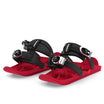
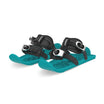












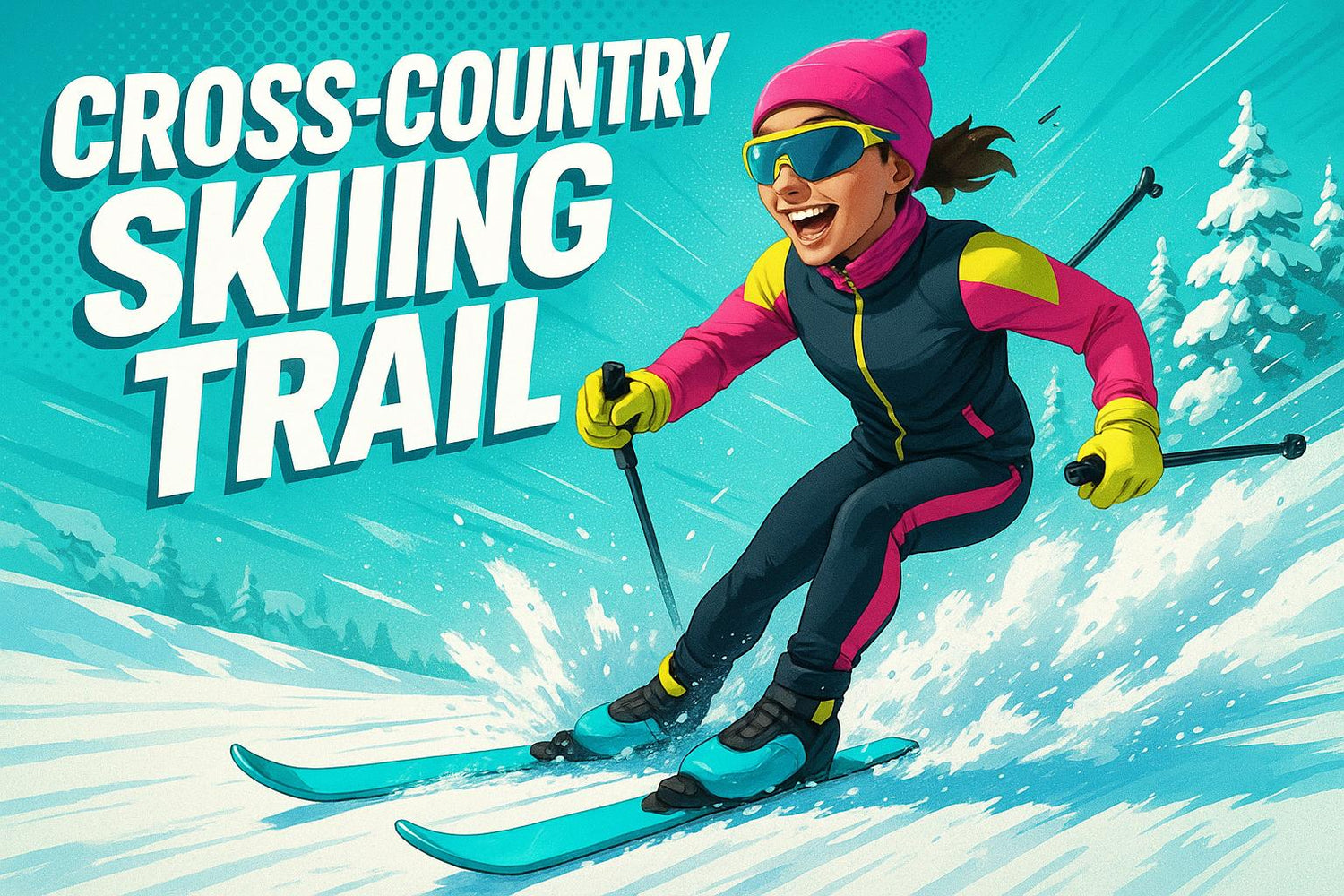
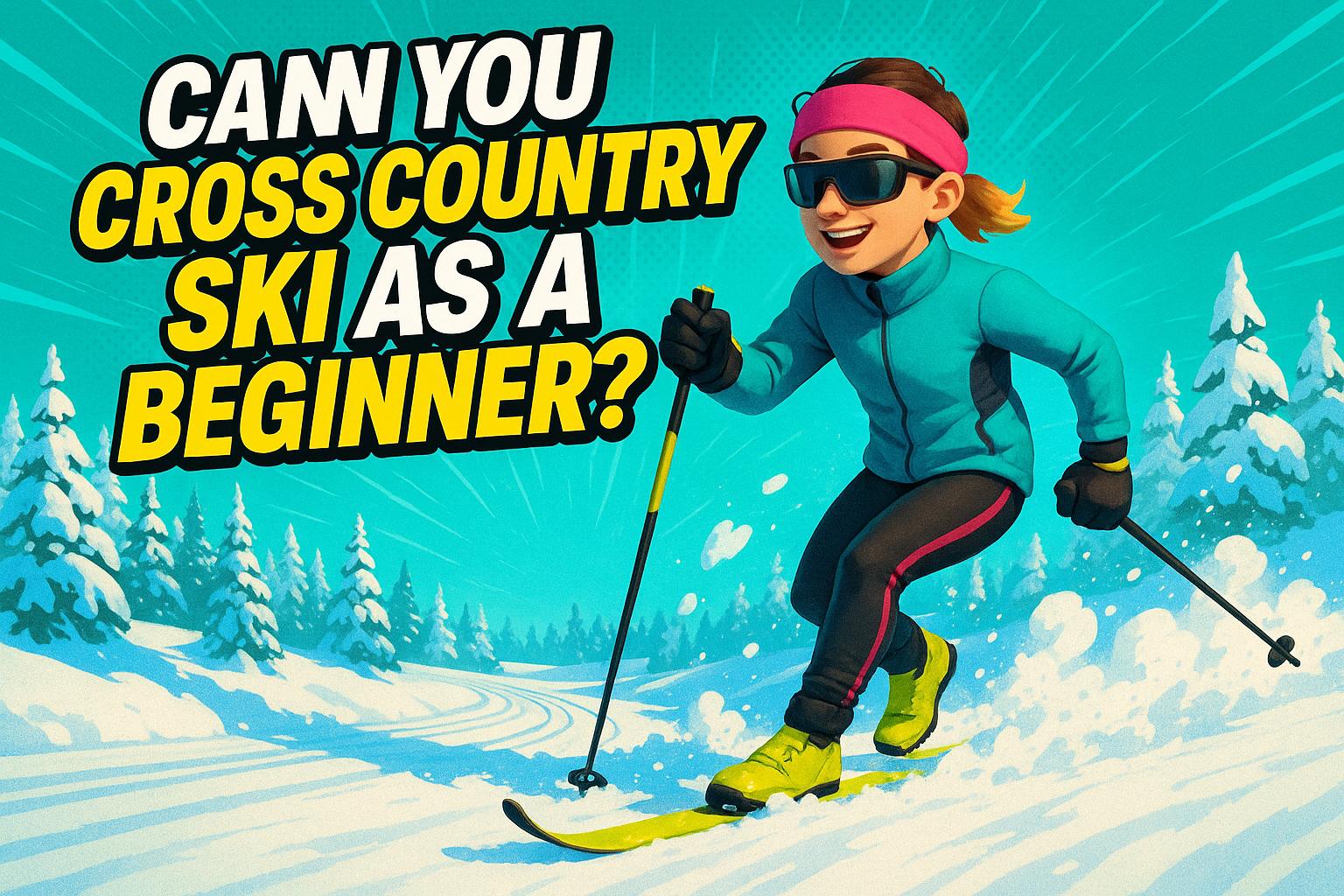
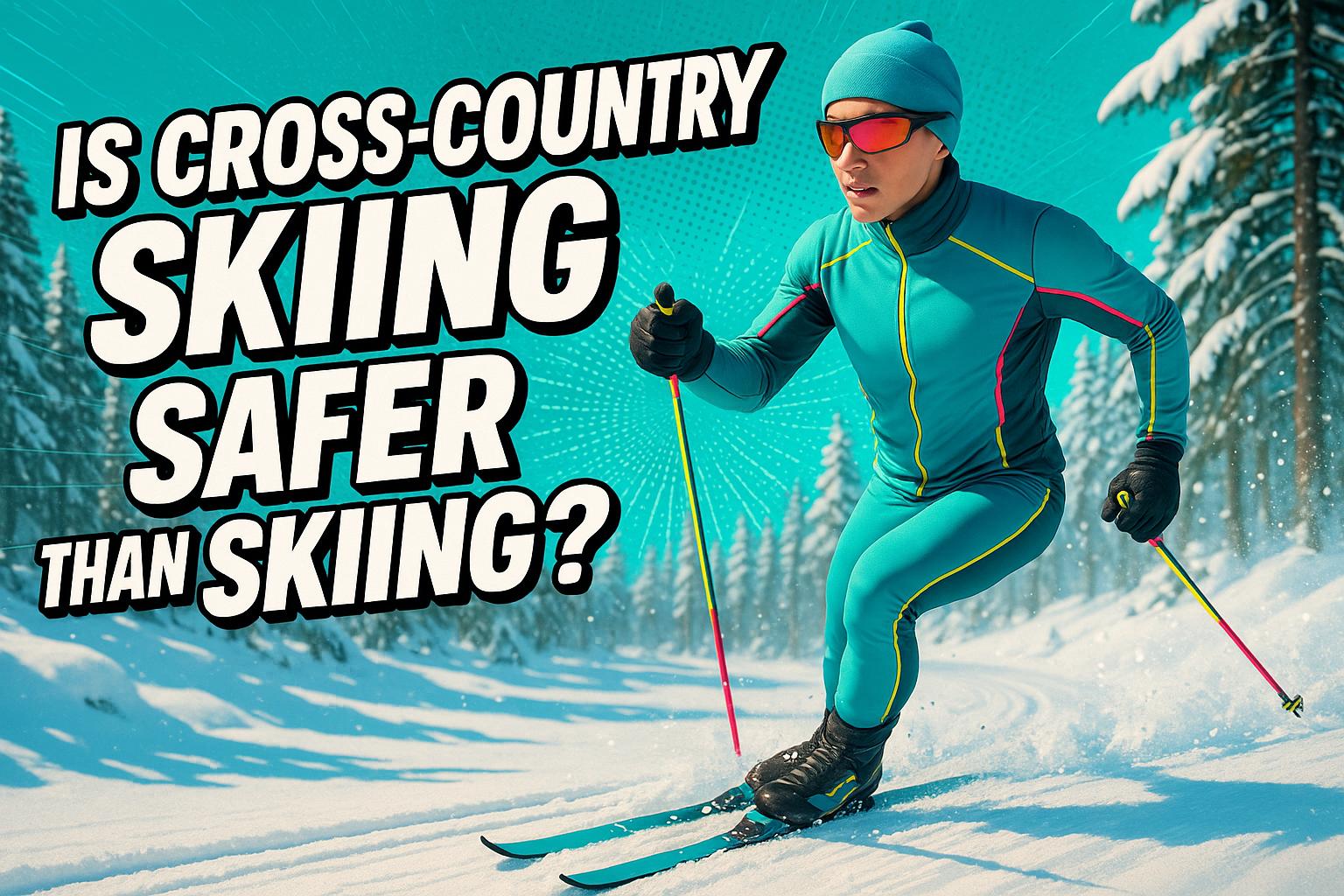




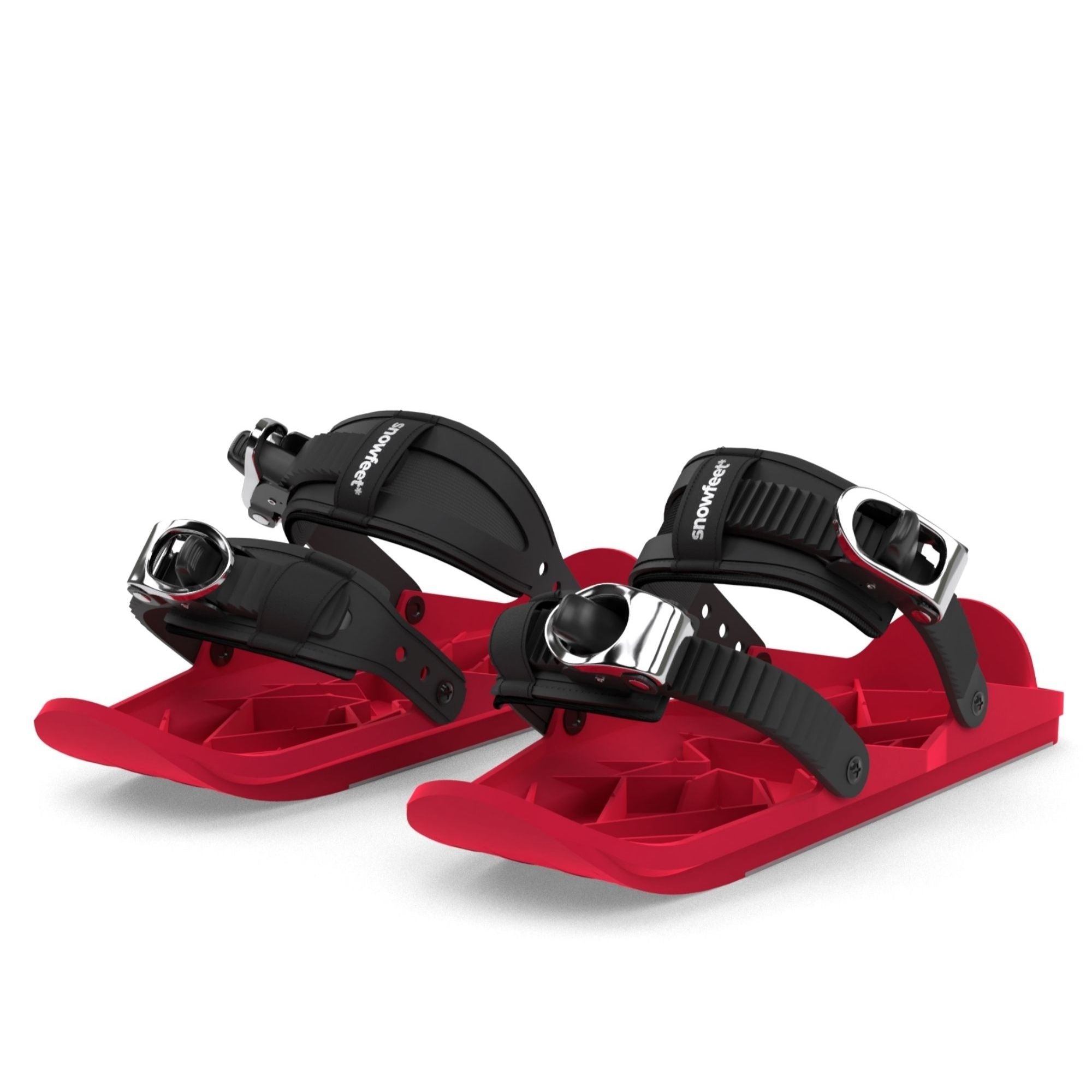
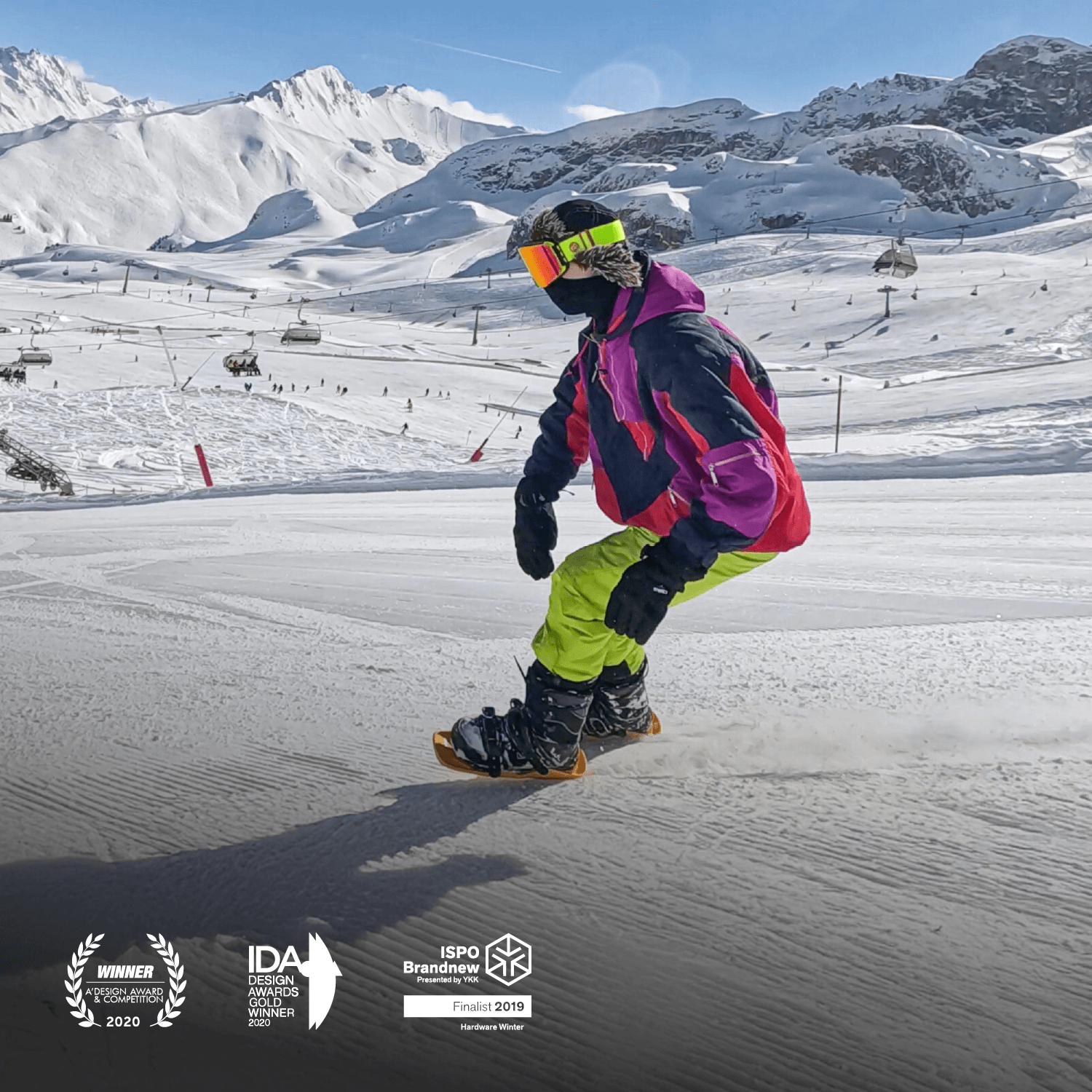




Laat een reactie achter
Deze site wordt beschermd door hCaptcha en het privacybeleid en de servicevoorwaarden van hCaptcha zijn van toepassing.